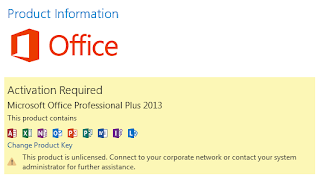Open an elevated Command Prompt and type the appropriate lines for your need.
Replace FQDN with the Fully Qualified Domain Name of your KMS server:

Windows 7, Windows 8, Windows 8.1, Server 2008/2008R2 and Server 2012/2012R2:

Office 2010 32 bit
Office 2013 64 bit
Replace FQDN with the Fully Qualified Domain Name of your KMS server:

Windows 7, Windows 8, Windows 8.1, Server 2008/2008R2 and Server 2012/2012R2:
- CD \Windows\System32
- cscript slmgr.vbs /skms FQDN
- cscript slmgr.vbs /ato

Office 2010 32 bit
- CD \Program Files (x86)\Microsoft Office\Office14
- cscript ospp.vbs /sethst:FQDN
- cscript ospp.vbs /act
- CD \Program Files\Microsoft Office\Office14
- cscript ospp.vbs /sethst:FQDN
- cscript ospp.vbs /act
- CD \Program Files (x86)\Microsoft Office\Office15
- cscript ospp.vbs /sethst:FQDN
- cscript ospp.vbs /act
Office 2013 64 bit
- CD \Program Files\Microsoft Office\Office15
- cscript ospp.vbs /sethst:FQDN
- cscript ospp.vbs /act
- cscript ospp.vbs /dhistoryacterr
 Posted by
Mike Wright
Posted by
Mike Wright





